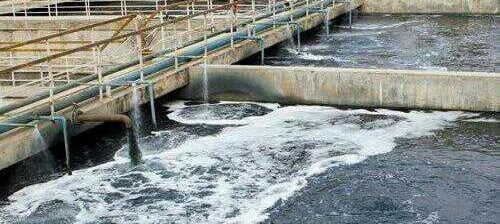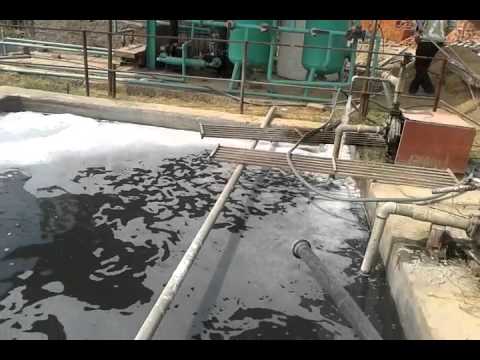Effluent Treatment Plant or ETP PLANT for Rice Mill Sevices operation maintenance
In recent years, considerable attention has been paid to the industrial wastes which are usually released into different water courses. Increasing environmental awareness has triggered various rice mill industries to install or set up appropriate wastewater treatment technologies. As the number of mills has grown, adequate waste water management has become very much essential. To put it simple, rice mill effluent has an adverse effect on natural environment hence installation of effluent treatment plant for rice mill is imperative for sustainable growth of the sector and to protect environment from degradation.Rice Mill Effluent |
ETP or Effluent Treatment Plant: Why for Rice Mills?
As we know that, huge number of rice mills engaged in rice milling which is the process of removing husk from paddy to produce edible rise. In the rice mills, the water is mainly used to soak the rice and they release huge volumes of wastewater and other by-products when processing paddy rice. The rice mill effluent coming from various rice mill operations often contains high concentration of toxic organic and inorganic matter which causes significant environmental damage when released.
Rice mills – one of the major agro-industries are recommended to take action to reduce the volume and strength of the effluent. Because, rice mills are considered as one of the most polluting sector among other industries both in terms of amount of discharge and wastewater or effluent composition.
Water is most important factor required during the pre processing of rice and after boiling; the waste water is also produced of which the treatment is necessary. The treatment of the rice mill effluent is highly essential to render the effluent suitable for discharge into surface water. ETP for rice mill is of increasing importance as they strive to meet stringent discharge conditions, and reduce operating costs.
1.The prime environmental hazard of the rice mill effluents is their foul smell and it also consists of numerous hazardous pollutants at various process stages like pre-cleaning, de-husking, polishing, mist polishing & etc. So, setting up of effluent treatment plant for rice mills should be prerequisite.
2. Physico-chemical characteristics of rice mill effluent:
Among agro-industries, rice processing industry (rice mills) require constant need of water in processing of rice and which in turn results in generation of huge amount of wastewater.
The rice mill effluents carry high load of suspended and dissolved organic matters causing serious environmental pollution. Contaminants present in the rice mill effluent exceeded the effluent discharge standards and contain the traces of pesticide overuse
Among agro-industries, rice processing industry (rice mills) require constant need of water in processing of rice and which in turn results in generation of huge amount of wastewater.
The rice mill effluents carry high load of suspended and dissolved organic matters causing serious environmental pollution. Contaminants present in the rice mill effluent exceeded the effluent discharge standards and contain the traces of pesticide overuse.
Effluent characteristics of a rice mill vary depending on the type of rice being processed. Majorly it consists of contaminants like: PH, total solids, dissolved solids, TSS, COD, BOD & etc. Dangerous effect from all these contaminants can be greatly reduced by using ETP for rice mill.
3. Treatment processes involved in ETP or Effluent Treatment Plant for Rice Mills:
Treatment of effluent from rice mills using ETP will greatly control environment pollution. Here, you will get to know sequence of treatment processes involved in ETP for rice mill
Treatment of effluent from rice mills using ETP will greatly control environment pollution. Here, you will get to know sequence of treatment processes involved in ETP for rice mill:
1. Preliminary or pretreatment of rice mill effluent:
This treatment is required to remove large solid materials that could cause damage and clogging of plant equipments. Large floating objects present in rice mill wastewater/effluent can be easily removed by passing waste water through bar screens. After the removal of large solid materials, partially treated wastewater is subjected to next treatment level called primary treatment.
2. Primary treatment of rice mill effluent:
When pretreated wastewater enters into primary treatment tank, removes about 60-70% of soild materials by physical or physicochemical processes and 40% of BOD. This treatment involves grit chamber to remove grit and also removes oil and grease by floatation method. It uses primary clarifiers where solid waste called sludge settles to the bottom which can be removed and treated in later stages. The primary treated water will then enter into the aeration tank for biological treatment.
Secondary treatment of rice mill effluent:
The main objective of this treatment level is to remove BOD present in rice mill effluent. Most of the ETPs use most widely used aerobic process (activated sludge process) in which liquid wastewater enters into aeration tank where wastewater mixes with air to encourage the growth of microbes and hence breakdown of organic matter takes place. When aerated water enter into secondary clarifier where heavier particles settle to the bottom which is called as secondary effluent. It removes about 70-80% of organic solids.
4. Tertiary treatment of rice mill effluent:
Liquid wastewater collected in secondary clarifier is now pumped to the tertiary treatment which removes any residual suspended solids which were not removed in earlier levels. It involves disinfection process to reduce spread of waterborne diseases and also to minimize public health problems by removing leftover pathogenic organisms in wastewater/effluent. It uses some disinfectants like chlorination, UV light, ozone etc.




STP Plant & How does it work? An STP Plant is designed to treat and process wastewater from domestic, industrial, or commercial sources. The primary goal of an STP is to remove contaminants, including solids, organic matter, and harmful microorganisms, to produce environmentally safe treated water or reusable effluent. Components of an STP Plant This effluent treatment plant is suitable for rice mill wastewater treatment. The system consists of anaerobic reactor, aerobic reactor, sludge storage tank, and sludge dewatering unit. This system can treat up to 2,000m3/day of wastewater.
Sewage Treatment Plant Manufacturer in Gurgaon In today’s rapidly urbanizing world, the efficient management of wastewater is crucial to ensure public health and environmental sustainability. Because of too many industries, high-rise structures, and antiquated waste disposal methods, groundwater contamination is spreading quickly. These days, groundwater has higher levels of nitrates, lead, fluoride, and iron, all of which can lead to several diseases. Kelvin Water Technologies is the leading Sewage Treatment Plant
Morowala, Brahmanwala, Dehradun, Uttarakhand 248002
Chakkar Ki Milak, Moradabad, Uttar Pradesh 244001
Gomti Nagar, Bhaisora, Lucknow, Uttar Pradesh 226010 all india UP
Operator
Procedure
amritadvance@gmail.com
8791967306
© 2024. All rights reserved.
